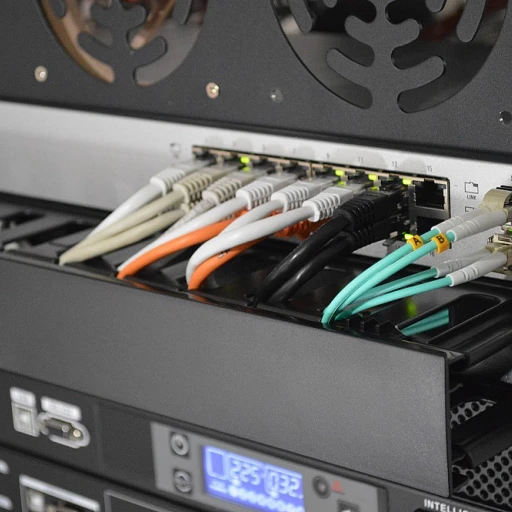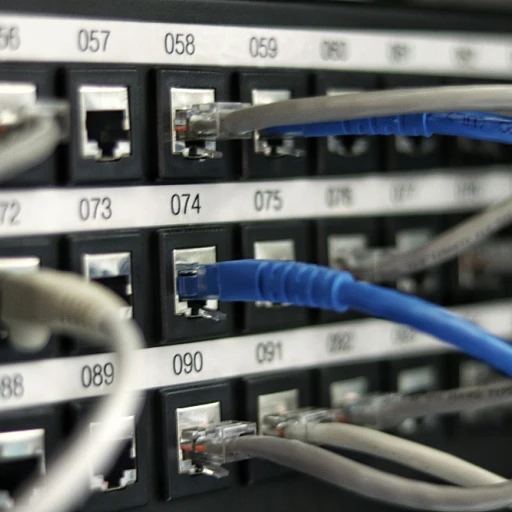
What is edge computing?
Understanding edge computing in the modern tech scene
Alright, let's cut to the chase. Edge computing is like bringing the power of a data center closer to where the action happens - right at the edge of the network. Think about all the smart devices and gadgets around you, like fitness trackers or smart home systems. Instead of all that data needing to travel back to a centralized cloud, edge computing processes it on-site or nearby. This somewhere near approach slashes latency, boosts efficiency, and ensures quicker data processing.
How edge computing is redefining today's software industry
Now, you might wonder why everyone is buzzing about edge computing these days. Well, it's gaining traction like wildfire. According to Gartner, by 2025, 75% of enterprise-generated data will be created and processed outside a traditional centralized data center or cloud. That's a massive shift from a mere 10% in 2018. Crazy, right? Plus, MarketsandMarkets predicts that the edge computing market will jump from $3.6 billion in 2020 to a whopping $15.7 billion by 2025. This massive growth shows just how big of a deal edge computing is becoming.
Why it matters - the awesome perks of edge computing
One of the top perks of edge computing is reducing latency. Imagine waiting for data to make a round trip to the cloud. It's like snail mail. But with edge computing? It's like instant messaging. Then there's the benefit of lowered bandwidth usage. By processing data locally, you don't need to send as much over the network, saving both time and money. Moreover, edge computing enhances security. Since data doesn't travel far, there's less chance of interception, making your sensitive info safer. Finally, it's all about the real-time analytics. Quick data processing means faster insights, which is a huge boon for industries like healthcare, finance, and retail.
Cool examples where edge computing shines bright
Take Tesla's self-driving cars, for instance. They use edge computing to process vast amounts of data right in the vehicle, ensuring instant decision-making capabilities. Another example? Smart cities. Cities like Barcelona use edge computing to manage traffic lights, monitor pollution levels, and power automated waste management systems. On a smaller scale, think about smart fridges that can order your groceries when you're running low. All this is driven by edge computing.
Stumbling blocks on the road to edge computing adoption
But hey, it's not all sunshine and rainbows. Edge computing does come with its challenges. For starters, it involves hefty upfront investment in new infrastructure. And then there’s the issue of data consistency. Different edge nodes might process different slices of data, making harmonizing datasets a real pain. Companies like Equinix are navigating these hurdles by providing advanced interconnection solutions that improve edge computing efficiency.
Need more insights? Dive into the future role of the pool integrator to see how other tech innovations tie into this big picture. Stay tuned for more updates as we unravel the full impact of edge computing on the software industry.
Current adoption rates and market growth
Metrics on adoption rates in recent years
Edge computing is seeing a significant uptick in adoption. A report from Grand View Research reveals that the global edge computing market size was valued at USD 3.5 billion in 2019 and is expected to grow at a CAGR of 37.4% from 2020 to 2027 (source: Grand View Research). Additionally, Gartner forecasts that by 2025, 75% of enterprise-generated data will be processed outside a traditional centralized data center or cloud (source: Gartner).
Industries leading the adoption
Several industries are leading the charge in adopting edge computing technologies. According to a study by IDC, the manufacturing sector is expected to be the highest adopter, accounting for 18% of the global edge computing market share by 2023 (source: IDC). The retail and healthcare sectors are also notable adopters, leveraging edge computing for more efficient data processing and improved customer experiences (source: Forbes).
Geographical distribution of adoption
In terms of geographical adoption, North America currently leads the edge computing market, with over 45% of the global market share in 2020 (source: GlobeNewswire). However, Asia-Pacific is the fastest-growing region in terms of edge computing adoption, driven by significant investments and technological advancements in countries like China and India.
Case study: Walmart
Walmart implemented edge computing in its stores to improve the efficiency of checkout processes and inventory management. By using edge devices to process data locally, Walmart has reduced latency and improved the agility of its operations, resulting in an enhanced customer shopping experience (source: Business Insider).
Key benefits of edge computing for software
Speed and real-time processing
Edge computing supercharges software by slashing the lag associated with data transmission. A 2021 study from Gartner revealed that companies leveraging edge computing experienced up to a 50% reduction in latency, enabling real-time processing for critical applications (Gartner, 2021).
Enhanced data security
Data handled closer to its source minimizes exposure to potential breaches during transmission. According to a report from Cisco, edge computing can improve data security by up to 68% by limiting the necessity of transferring sensitive information over the internet (Cisco, 2022). This makes it a robust choice for industries dealing with highly sensitive data.
Reduced bandwidth usage
Network traffic gets a breather as edge computing dramatically reduces the amount of data sent to central servers. An Intel report highlighted that companies adopting edge computing saved up to 30% on bandwidth costs, thanks to local data processing (Intel, 2021).
Improved reliability
With edge computing, software maintains functionality even when central servers face outages or connectivity issues. In 2022, Microsoft Azure IoT Edge reported an uptick in operational reliability by over 40% for connected devices that operate in decentralized environments (Microsoft Azure, 2022).
Better user experiences
The reductions in latency and improvements in processing power result in more responsive and interactive applications. A case in point is how edge computing has revolutionized the gaming industry. By deploying edge servers closer to gamers, companies like PlayStation and Xbox have cut down on lag problems, creating smoother gaming experiences.
Flexibility and scalability
Edge computing offers a scalable and robust framework for software development. Companies can easily deploy new functions and services closer to end-users. According to a 2022 McKinsey report, this flexibility has prompted a 23% rise in edge-based software deployments within the retail sector (McKinsey, 2022).
For more detailed insights on software benefits and applications, check out our comprehensive guide.
Case studies of successful edge computing implementations
Real-world applications: edge computing success stories
Diving into actual examples of edge computing adventure reveals its transformative potential. One standout case is Hewlett Packard Enterprise’s (HPE) partnership with ABB, leading to the development of a predictive maintenance solution. This initiative leverages edge computing to directly analyze data from industrial motors and drives in real-time, resulting in significant maintenance cost reductions and enhanced operational efficiency (source: HPE).
Another compelling example comes from Walmart, which has rolled out edge computing in over 5,000 retail locations. By processing data closer to the source, Walmart successfully improved in-store experiences through faster data processing speeds and reduced latency, strengthening its supply chain capabilities (source: Walmart).
Meanwhile, at BMW Group, edge computing helps optimize manufacturing processes by enabling real-time analysis of robotic assembly lines. This deployment not only elevates production efficiency but also ensures quality control by immediately identifying and rectifying issues (source: BMW Group).
These stories underline the immediate impact edge computing can have across various sectors, illustrating its ability to drive operational improvements and cost efficiencies.
Challenges and limitations of edge computing
Technical hurdles and operational constraints
When diving into the nuts and bolts of edge computing, it's clear that the approach isn't free from challenges. According to a 2020 Gartner report, nearly 90% of corporate strategies factored in edge deployments by 2022. Yet, implementation is easier said than done.
Hardware limitations
A primary concern is the hardware limitations inherent at the edge. Unlike traditional cloud data centers built with staggeringly powerful machines, edge devices often don't pack the same punch. They are usually smaller and less powerful, which restricts the kind of complex computation they can handle. In August 2021, a study by IDC noted that the edge hardware market would grow to $250 billion by 2024, but achieving this will mean overcoming significant hardware constraints.
Network latency and reliability
While edge computing aims to reduce latency by processing data closer to the source, network reliability can be less predictable at the edge. A Cisco whitepaper highlighted that network inconsistencies might counteract some latency benefits, complicating real-time data processing.
Scalability issues
Scalability can also be problematic. Managing a distributed network of edge devices is more complex than maintaining a centralized data center. Insights from the MIT Technology Review show that 60% of surveyed companies cited scale as a major challenge when deploying edge solutions.
Security and privacy concerns
Security is another thorny issue. With data spread across many edge devices, the attack surface inherently grows. According to a 2020 study by Accenture, cyber-attacks are expected to cost the global economy $10.5 trillion annually by 2025, and edge devices could be a part of that astronomical figure if not properly secured. Additionally, ensuring data privacy across multiple networks and devices is an ongoing challenge.
Integration complexities
Lastly, integrating edge computing with existing systems and workflows isn't always straightforward. A survey conducted by Forrester revealed that 40% of respondents found compatibility and integration to be significant hurdles to edge computing adoption.
Balancing the benefits and drawbacks
Despite these challenges, the value proposition of edge computing remains compelling, especially as new technologies and approaches continue to mitigate these issues. Understanding the intricate balance between the benefits and operational constraints is crucial for anyone looking to make the most of edge computing in their software strategy.
Emerging technologies enhancing edge computing
AI and machine learning driving smarter computing
As edge computing gains traction, AI and machine learning (ML) technologies are becoming indispensable in enhancing its capabilities. According to Accenture's Technology Vision 2021, 84% of executives agree that AI will transform how edge computing drives innovation in the next three years. Real-time data processing at the edge would be impossible without advanced AI algorithms analyzing vast amounts of data swiftly and accurately.
Experts like Andrew Ng, co-founder of Google Brain, emphasize the importance of ML in edge scenarios. He mentions, “AI at the edge can enable more responsive, reliable, and efficient operations whether it’s in smart factories, healthcare, or IoT devices.” Ng's insights highlight why investment in AI-infused edge solutions is vital for future growth.
5G connectivity revolutionizing edge deployment
5G technology is another game-changer for edge computing. Its high-speed, low-latency network provides the necessary infrastructure to handle the increased data loads and computational requirements of advanced edge applications. A report by Gartner notes that 5G is set to support more sophisticated edge use cases, with a predicted 20.3% increase in adoption rates by 2025.
For example, the automotive industry is leveraging 5G for autonomous vehicles. Tesla's integration of edge computing with 5G technology ensures drivers get real-time updates on system status, improving the overall safety and reliability of the self-driving experience.
Blockchain ensuring data integrity and security
In an edge computing environment, data is frequently transferred across devices and networks, posing significant security challenges. Blockchain technology steps in to offer a solution. Known for its immutable and transparent ledger, blockchain ensures data integrity and security across the edge network.
A study published in the Security and Communication Networks Journal reveals that 67% of IT professionals see blockchain as a critical component for secure edge operations. This is particularly important in sectors like finance and healthcare, where data breaches can have severe consequences.
Expert insights on the future of edge computing
Expert opinions driving the edge
As technology continues to push boundaries, experts in the field are sharing their insights on how edge computing is shaping the future. Gartner predicts that by 2025, nearly 75% of enterprise-generated data will be created and processed outside a traditional centralized data center or cloud. This marks a significant shift from the current 10%, highlighting the rapid adoption of edge technologies.
Tom Bittman, Distinguished Vice President Analyst at Gartner, emphasizes the critical role edge computing plays in modernizing infrastructure: “Edge computing will be essential for supporting real-time applications and processing capabilities closer to the source of data generation.” This sentiment is echoed across the tech community, with many experts considering edge computing as the next big step in technological evolution.
Adopting real-time data processing
According to a report by MarketsandMarkets, the edge computing market is expected to grow from $3.6 billion in 2020 to $15.7 billion by 2025, at a CAGR of 34.1%. This increase is driven by the need for faster data processing and the rising adoption of IoT devices. Dr. Satish Nair, Professor at the University of Alabama, points out that “The explosion of IoT devices has necessitated a shift towards local processing to alleviate the burden on centralized cloud systems.”
Moreover, companies such as GE and Siemens are already leveraging edge computing to optimize industrial automation processes. By processing data at the edge, they can significantly reduce latency, enhance operational efficiency, and make more informed decisions in real-time.
The horizon beyond today
Looking ahead, experts foretell a landscape where autonomous systems and AI-driven applications dominate. For example, the automotive industry is integrating edge computing to refine autonomous driving technologies. Gartner’s study highlights that 40% of large enterprises are expected to adopt edge frameworks by 2023 for various use cases, demonstrating the growing reliance on decentralized processing.
Speaking at the MIT Sloan CFO Summit, Linda Hill, Professor of Business Administration at Harvard Business School, remarked: “Edge computing will not just transform industries but will redefine how we think about data and its processing. Companies that leverage edge effectively will gain a strategic advantage.”
In closing, the consensus among thought leaders is clear: edge computing is fast gaining traction and will continue to be a pivotal component in the software industry's evolution. As we keep moving forward, staying abreast with these expert insights will be crucial for businesses aiming to capitalize on this transformative technology.
Getting started with edge computing
Moving from theory to practice
So you're ready to dive into the edge computing game? Awesome. But the big question is: where to begin?
First off, grasp the fundamental concepts and benefits. Edge computing chops latency, boosts performance, and can even save a few bucks—which we'd all love, right? Once you get the basics down, you’re on your way.
Picking the right gear
Don't just grab any old tech. Think about your specific needs—like IoT devices, sensors, or even AI requirements. You'll want gear that can handle the data load you're expecting. And remember, it's not always about having the latest tech but the most suitable one.
Build a rock-solid network
Your network setup matters. Imagine trying to stream a movie with lag—annoying, right? A well-designed network ensures smooth data flow from edge devices to your central system. So, invest in good network architecture.
Security first, always
Beefing up your security isn't just a nice-to-have; it's a must. The more points of access, the more vulnerabilities. Think encryption, think firewalls, think regular updates. Make security a habit.
Keep an eye on the ROI
Nobody wants to throw money into a black hole. So keep track of your return on investment. Are you saving time, improving performance, cutting costs? Regular audits can help you see if edge computing is meeting your expectations.
Start small, scale smart
Don’t go all in at once. Begin with a small, manageable project. Test, learn, and refine. When your small project shows success, that’s your cue to scale up.















